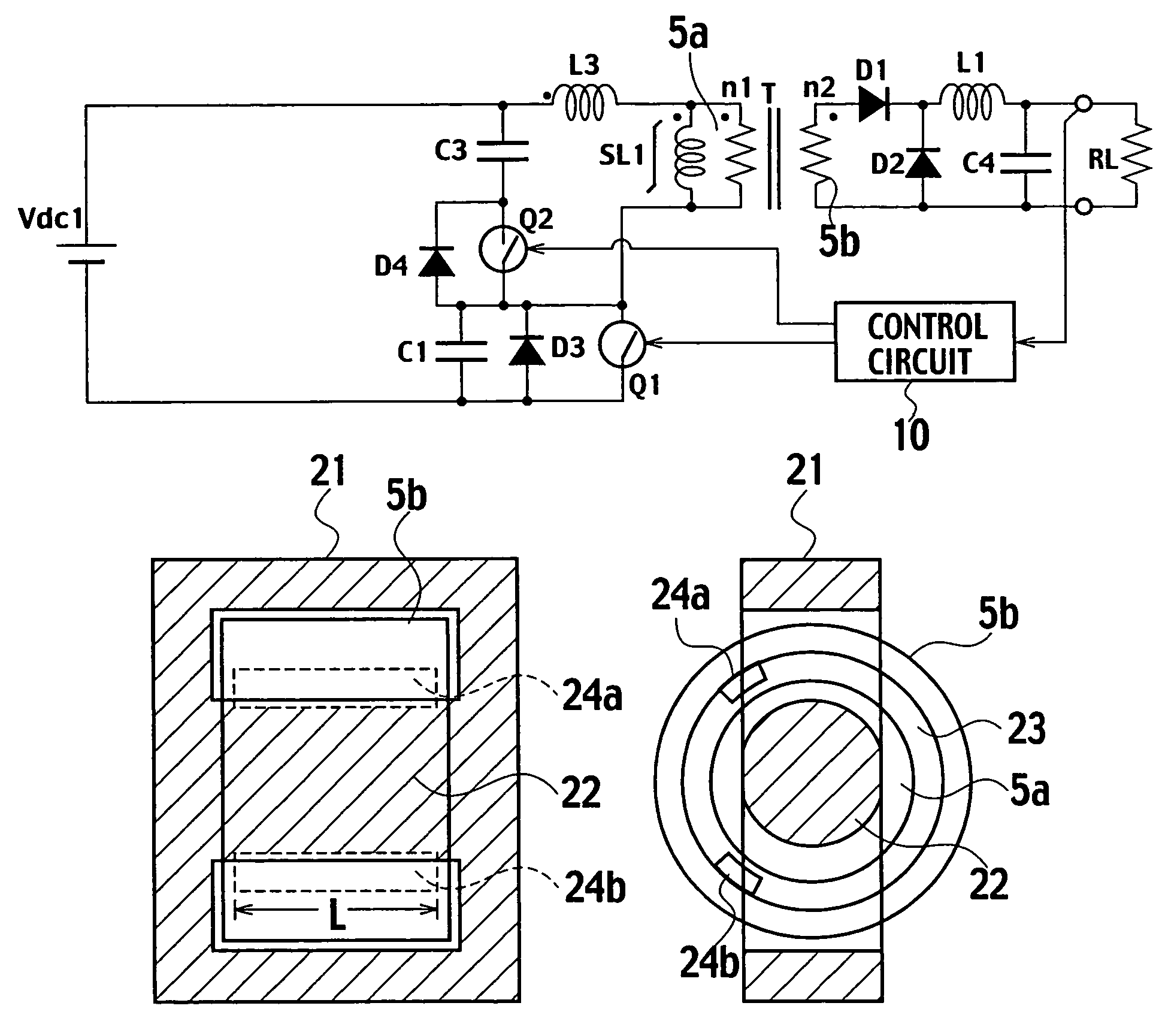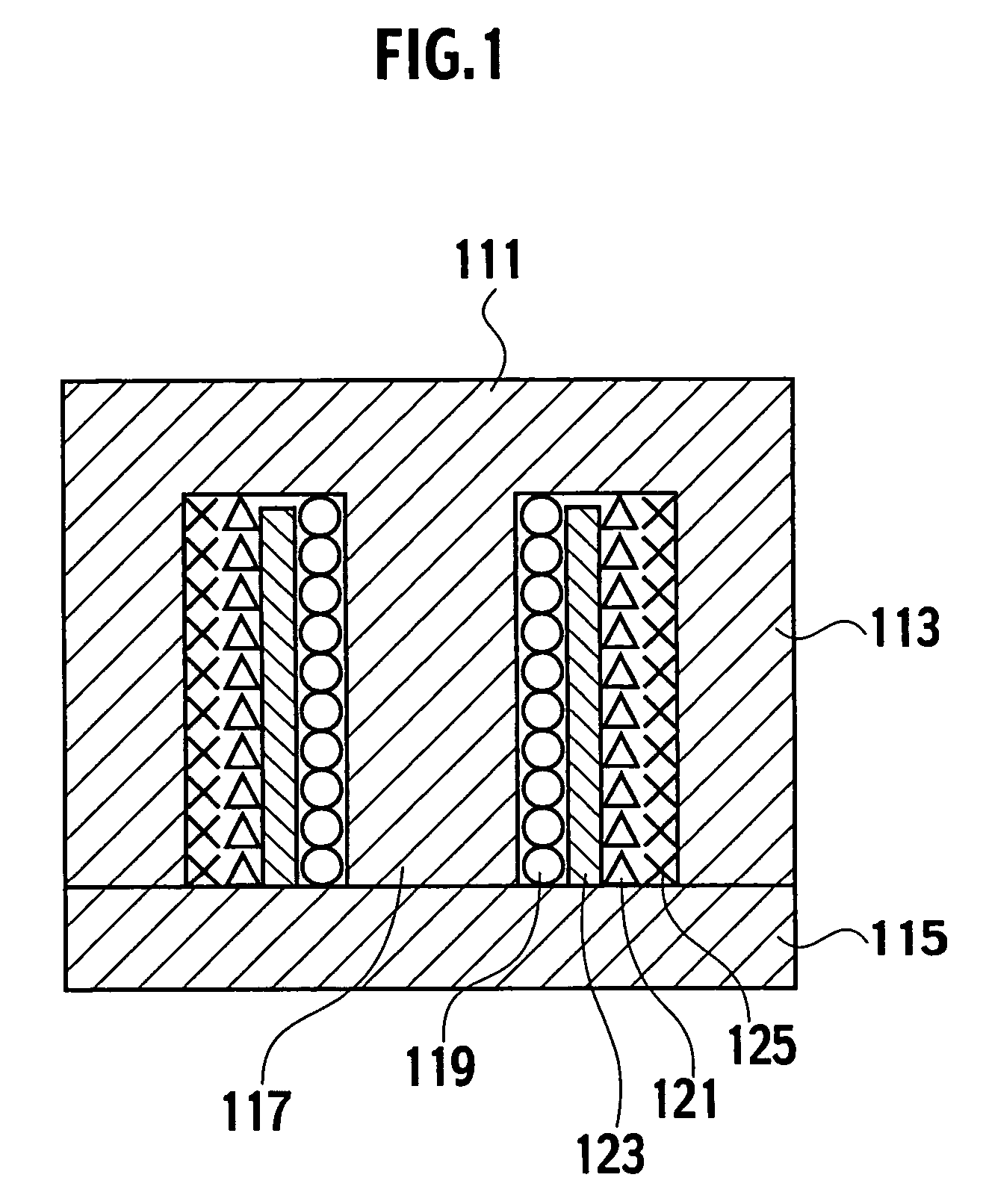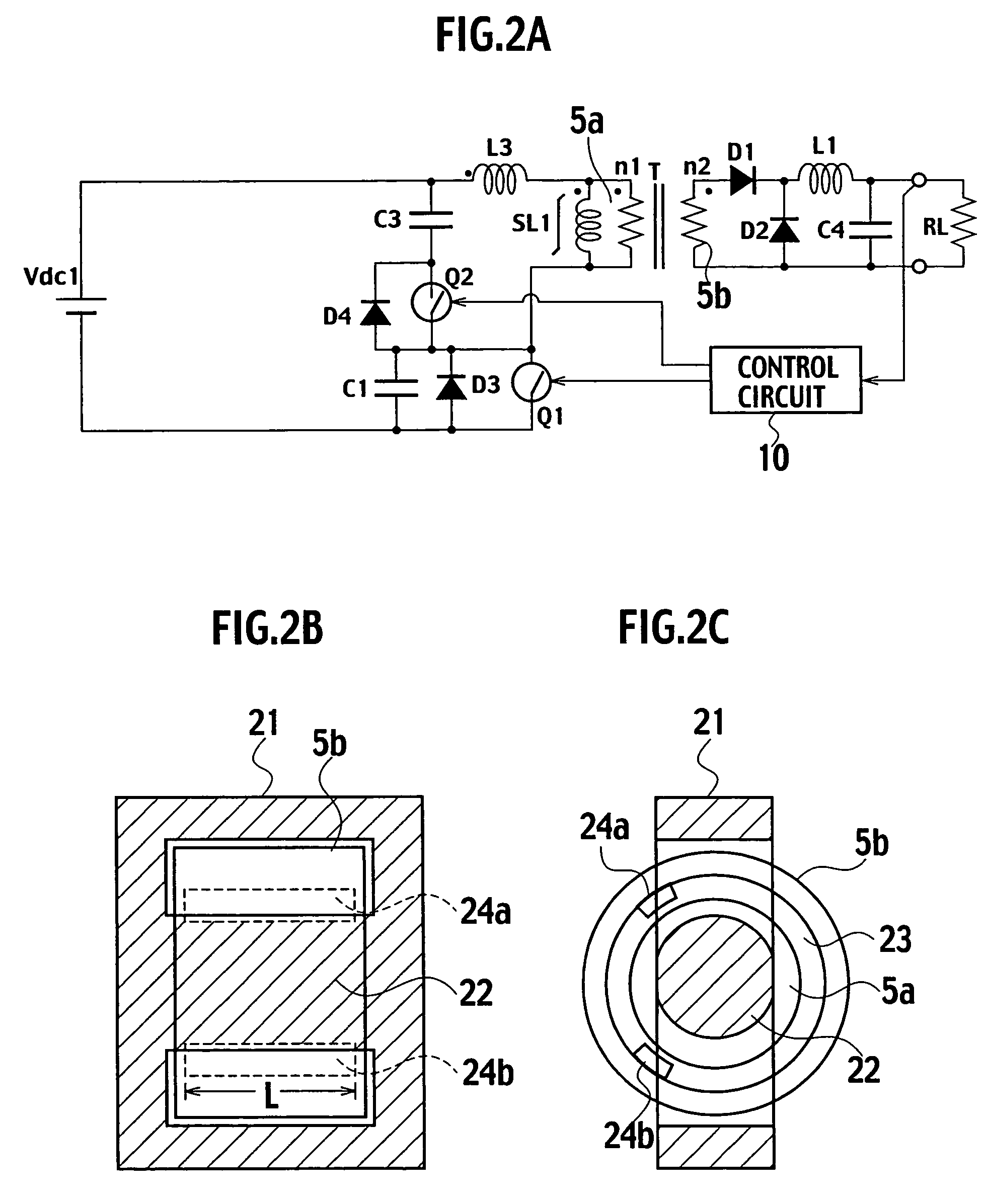Switching power supply device
a power supply device and power supply technology, applied in the direction of ignition automatic control, process and machine control, instruments, etc., can solve the problems of increasing the number of components, increasing the size of the switching power supply, increasing the packaging surface area, etc., to eliminate the switching loss and minimize the switching loss
- Summary
- Abstract
- Description
- Claims
- Application Information
AI Technical Summary
Benefits of technology
Problems solved by technology
Method used
Image
Examples
embodiment 1
[0024]A switching power supply of a first embodiment features that when a main switch is turned on, electric power is directly supplied to a load via a secondary winding of a transformer while when the main switch is turned off, excitation energy stored in a primary winding of the transformer is stored in a capacitor C3 to turn on an auxiliary switch whereby first and third quadrants on a B-H curve of a core of the transformer is used and making up shortfalls in the excitation energy with energy from a reactor L3 allows a starting point on the B-H curve to rest on a lower end of the third quadrant whereas a saturable reactor is connected to the primary winding of the transformer in parallel whereby the saturable reactor is saturated at a terminating point of an on-period of the auxiliary switch to increase a current to cause a reverse voltage to sharply occur when the auxiliary switch is turned off for thereby permitting the main switch to achieve zero-voltage switching.
[0025]FIGS. ...
example 1
(Concrete Example 1 of Transformer T)
[0052]FIG. 7 is a structural view showing a concrete example 1 of an inner bobbin of the transformer. FIG. 8 is a structural view showing a concrete example 1 of an outer bobbin of the transformer. The transformer of the concrete example 1 is comprised of the main core 21 shown in FIG. 2B, a cylindrical inner bobbin 31 (shown in FIG. 7) on which the primary winding 5a is wound, and an outer bobbin 33 (shown in FIG. 8), formed with slits 34a, 34b each with a given length L along a circumferential direction of the primary winding 5a to which auxiliary cores 35a, 35b are inserted, which is larger in diameter than the first bobbin 31 and on which the secondary winding 5b is wound. The inner bobbin 31 and the outer bobbin 33 are made of resin material.
[0053]By adjusting the number of auxiliary cores and the length L, a well-suited leakage inductance value is obtained. Further, for the purpose of precluding the winding from dropping-off, the inner bobb...
example 2
Concrete Example 2 of Transformer
[0057]FIG. 9 is a structural view showing a concrete example 2 of an inner bobbin of the transformer. FIG. 10 is a structural view showing a concrete example 2 of an outer bobbin of the transformer. The transformer of the concrete example 2 is comprised of the main core 21 shown in FIG. 2B, the cylindrical inner bobbin 31 (shown in FIG. 9) on which the primary winding 5a is wound, and an outer bobbin 37 (shown in FIG. 10), larger in diameter than the first bobbin 31 and wound with the secondary winding 5b, which is made of insulating magnetic material such as plastic magnet material. The magnetic material may include ferrite and Permalloy.
[0058]By adjusting a magnetic permeability of insulation magnetic material, a well-suited leakage inductance value is obtained. Further, for the purpose of precluding the winding from dropping-off, the inner bobbin 31 has both ends formed with the stepped portions 31a and, likewise, the outer bobbin 37 has both ends...
PUM
| Property | Measurement | Unit |
|---|---|---|
| voltage | aaaaa | aaaaa |
| leakage inductance | aaaaa | aaaaa |
| length | aaaaa | aaaaa |
Abstract
Description
Claims
Application Information
 Login to View More
Login to View More - R&D
- Intellectual Property
- Life Sciences
- Materials
- Tech Scout
- Unparalleled Data Quality
- Higher Quality Content
- 60% Fewer Hallucinations
Browse by: Latest US Patents, China's latest patents, Technical Efficacy Thesaurus, Application Domain, Technology Topic, Popular Technical Reports.
© 2025 PatSnap. All rights reserved.Legal|Privacy policy|Modern Slavery Act Transparency Statement|Sitemap|About US| Contact US: help@patsnap.com



